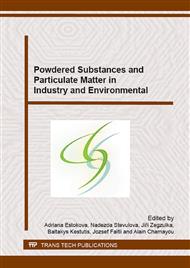[1]
O. Takayuki, The Effects of Recycling on Pulp and Paper Properties, Japan Tappi Journal, vol. 56 (7) (2002) 986-992.
Google Scholar
[2]
J. E. Stone, A. M. Scallan, Influence of drying on the pore structures of the cell wall, in: Consolidation of the Paper Web, Trans. Symp. Cambridge, Sept. 1965, f. Bolam (ed. ), Tech. Sec. British Paper and Board Makers´Assoc. Inc. London, vol. 1, 1966, pp.145-174.
Google Scholar
[3]
A. De Ruvo, M. Htun, Fundamental and practical aspects of paper-making with recycled fibres, In: The Role of Fundamental Research in Paper Making, Brander (ed. ), Mechanical Engineering Pub., Ltd., London, vol. 1, 1983, pp.195-225.
Google Scholar
[4]
S. Khantayanuwong et al., Changes in Crystallinity and Re-swelling Capability of Pulp Fibres by Recycling Treatment. In Japan Tappi Journal, 56 (6) (2002) 103-106.
DOI: 10.2524/jtappij.56.863
Google Scholar
[5]
R. Solar, M. Mamon, S. Kurjatko, R. Lang, V. Vacek, A simple method for determination of kinetics of radial, tangential and surface swelling of wood. in: Drvna industrija. 57 (2) 2006 75-82.
Google Scholar
[6]
G. Jayme, H. Büttel, The determination and the meaning of water retention value (WRV) of various bleached and unbleached cellulosic pulps, Wochenbl. Papierfabr., 96 (6) (1968) 180-187.
Google Scholar
[7]
L. Paavilainen, Conformability-flexibility-of sulfate pulp fibres. In Paperi Puu. 75 (9-10) (1993) 896-702.
Google Scholar
[8]
Woodward, T., W., Recycled fibre types, processing history affect pulp behavior during papermarking. Information on: http: /www. paperrecovery. eu.
Google Scholar
[9]
H. Karlsson, Fibre Guide. Fibre analysis and process applications in the pulp and paper industry. AB Lorentzen & Wetre, Box 4, SE-164 93, KISTA, Sweden, (2006).
Google Scholar
[10]
J.L. Klofta, M. L. Miller, Effects of deinking on the recycle potential of papermarking fibres. In: Res. Forum Recycling, DAPPI (1993) 207-220.
Google Scholar
[11]
N. Stevulova, J. Cigasova, A. Estokova, E. Terpakova, A. Geffert, F. Kacik, E. Singovszka, M. Holub, Properties Characterization of Chemically Modified Hemp Hurds, Materials, 7 (2014) 8131-8150.
DOI: 10.3390/ma7128131
Google Scholar
[12]
STN ISO 5630-4 (500 375), Paper and board. Accelerated ageing, Part 4: Dry heat treatment at 120 °C or 150 °C.
Google Scholar
[13]
J. Geffertova, A. Geffert, Recycling of the Hardwood Kraft Pulp, in: Material Recycling, Trends and Perspectives. Rijeka: InTech, 2012, pp.265-298.
DOI: 10.5772/33080
Google Scholar


